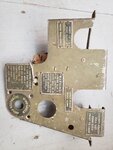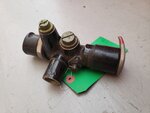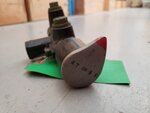Bataan Jerry
Recruit
- 9
- Sep 27, 2019
Does anyone know about the automatic gun charging systems on the early P-40s? (1941) How the guns were manually charged?
Among the many problems P-40 ground crews at Clark Field had in readying the pursuit squadrons for war in the fall of 1941 was the hydralics for the automatic gun charging system was linked to the landing gear. In the summer of 1941 word came from Wright Patterson to disconnect the gun chargers or the wheels could collapse. They solved the problem at W-P by October but no one informed Clark before war started.
Thanks if you can shed some light?
Among the many problems P-40 ground crews at Clark Field had in readying the pursuit squadrons for war in the fall of 1941 was the hydralics for the automatic gun charging system was linked to the landing gear. In the summer of 1941 word came from Wright Patterson to disconnect the gun chargers or the wheels could collapse. They solved the problem at W-P by October but no one informed Clark before war started.
Thanks if you can shed some light?



